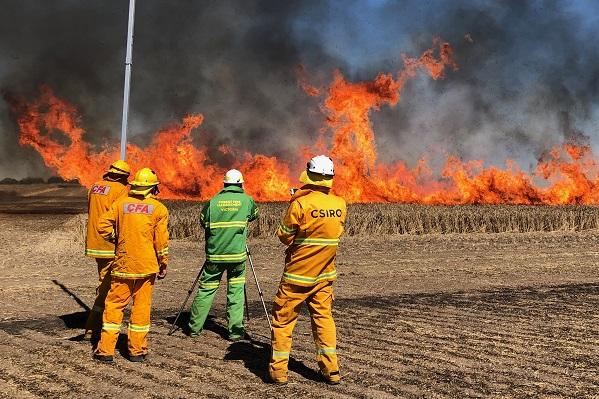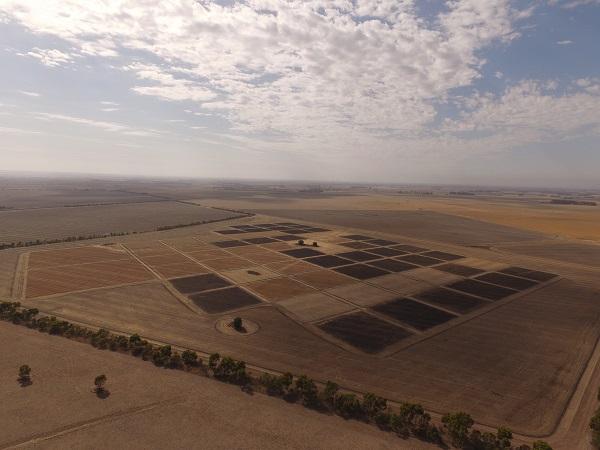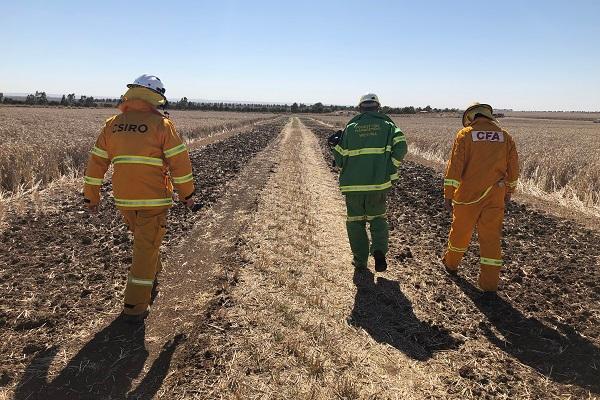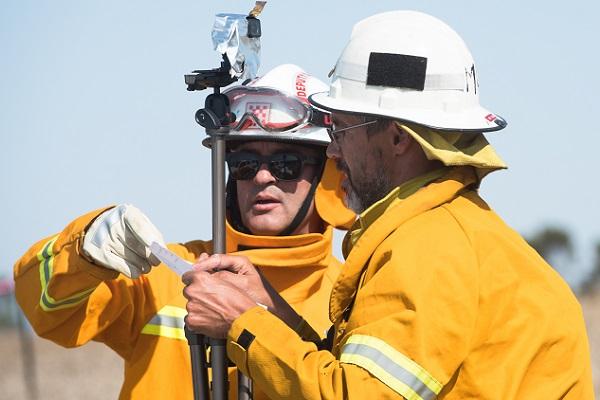Residents in and around Wallinduc, south-west of Ballarat may see smoke in their area over the next few days as CFA and CSIRO undertake new cutting-edge research.

CFA and CSIRO are leading a research project, through which they will be burning croplands this weekend as part of a research project to look at how fire behaves in crops rather than grasslands.
In the first study of its kind, research teams are undertaking burns on a large piece of private land at Wallinduc, southwest of Ballarat, to find out more about how fire behaves in crops.
While planned fuel reduction burns take place outside the fire season, these research burns need to take place under high fire danger conditions to help the team collect data that will improve the way risk is assessed and fire behaviour is predicted in such conditions.

An aerial view showing the research burning plots surrounded by ground that was burnt before the fire season to provide a safety barrier for the research burns, which have to take place in high fire danger condition to help improve fire behaviour modelling.
CFA Deputy Chief Officer Bushfire Alen Slijepcevic said that while CFA and CSIRO supported by other Australian fire agencies have already completed extensive research around grassland curing - which looks at how and where grassland has dried out, and how this will contribute to fire behaviour - more information was needed about how fire behaves when moving through crops.
“We’re currently using the CSIRO Grassland fire spread meter to determine fire spread in croplands, however fuel structure and arrangement can be quite different from grass,” he said.
“We want to find out to what extent fire behaviour differs between grassland and crops, and to do this we need to perform a series of experimental burns on large areas of crops,” he said.
“We’re hoping to find out the rate of fire spread, flame geometry and fuel loads according to different types of croplands; unharvested, harvested and baled crops.
“This will not only assist us with future response to crop fires, but will help us to determine what the Fire Danger Rating is, when Fire Danger Periods should take place in a particular area, when to declare Total Fire Bans and how we allocate resources across the state.”

CFA is working with CSIRO’s Bushfire Behaviour and Risks to produce science behind what can actually happen during fires on all different types of croplands.
Mr Slijepcevic said testing has previously focused on grassfires and bushfires but that we also need to look more closely at other fires, including those in croplands.
“With the help from CSIRO’s Bushfire Behaviour and Risks, we’re now producing science behind what can actually happen during fires on all different types of croplands.
“These experimental burns allow us to capture more thorough and improved data, which in turn will contribute to more informed decisions when it comes to controlling crop fires and predicting their behaviour. This will ensure that we issue better quality warnings to communities.”
The research burns started at the Wallinduc site last weekend and look set to continue this Saturday and across the weekend. These burns are made possible by a strong contribution from the CFA volunteers who are attending the burns. A range of data collection resources will be used, including remotely piloted aircraft (drones) and infrared gear.
Once the Wallinduc burns are completed, the results will be analysed by CSIRO.
If anyone is unsure if the smoke is related to these experimental burns or an actual fire, they can call the VicEmergency Hotline on 1800 226 226.
.jpg)
Researchers at the burn. Picture: Owen Gooding.

CFA Deputy Chief Officer Alen Slijepcevic and CSIRO lead researcher Miguel Cruz discuss lighting patters for the next pair of burns. Picture: Owen Gooding.
Author: CFA Media